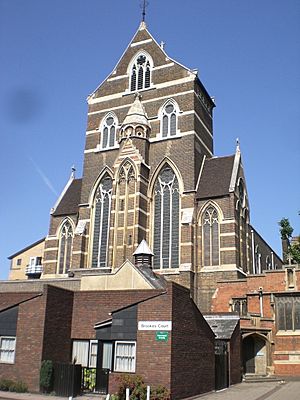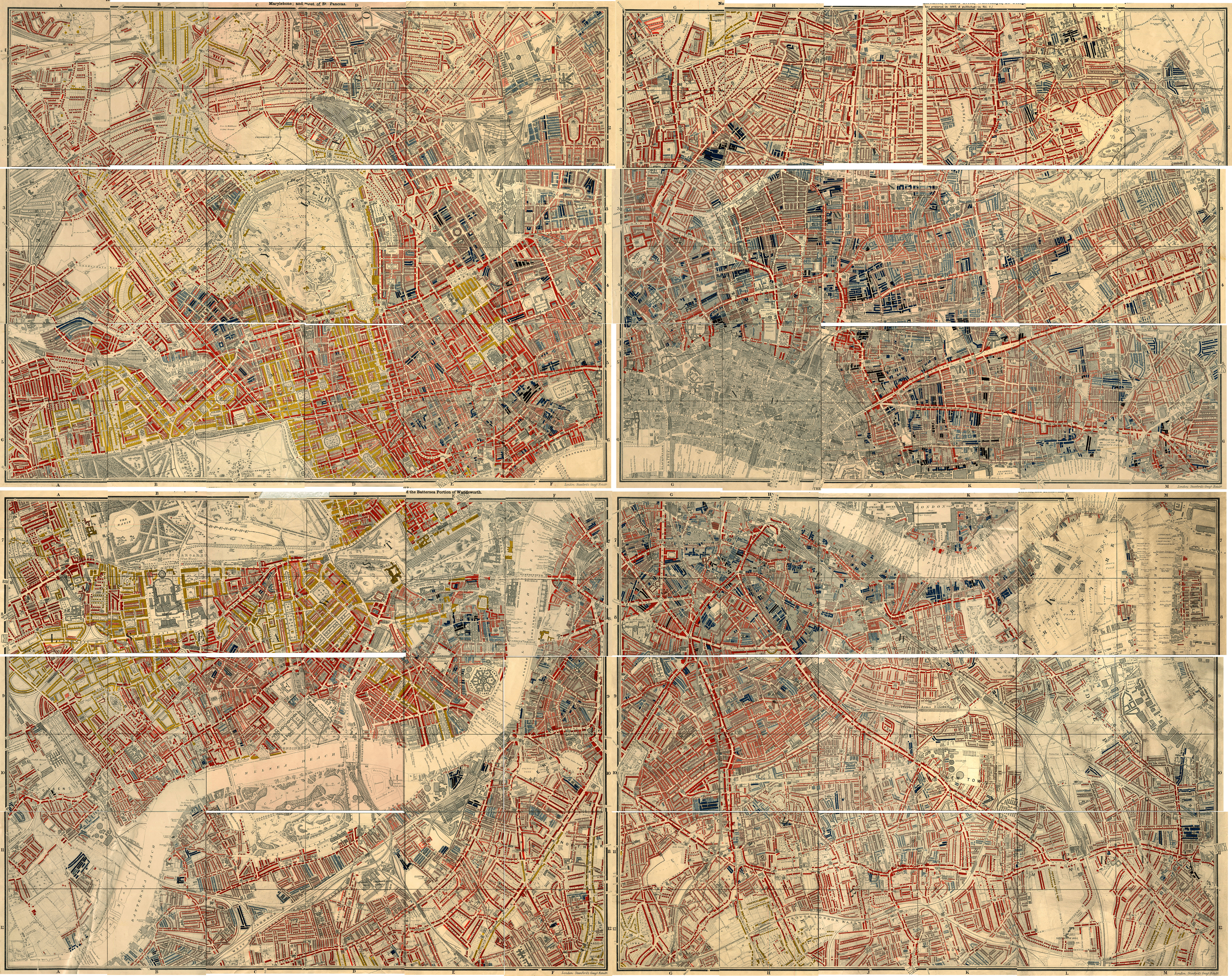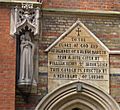St Alban's Church, Holborn facts for kids
Quick facts for kids St Alban's Church, Holborn |
|
|---|---|
 |
|
| 51°31′10.772″N 0°6′38.174″W / 51.51965889°N 0.11060389°W | |
| Location | Holborn, London |
| Country | England |
| Denomination | Church of England |
| Churchmanship | Traditional Catholic |
| History | |
| Status | Active |
| Dedication | St Alban |
| Architecture | |
| Functional status | Parish church |
| Heritage designation | Grade II* listed |
| Designated | 1951 |
| Architect(s) | William Butterfield |
| Style | Neo-Gothic |
| Years built | 1861–1862 |
| Administration | |
| Archdeaconry | Hampstead |
| Episcopal area | Edmonton |
| Diocese | London |
| Province | Canterbury |
St Alban's Church, Holborn is a special Church of England church located in Holborn, central London. It's a parish church, which means it serves the local community. The church is in an area known as Hatton Garden, famous for its jewelers. Since 1951, St Alban's has been a Grade II* listed building, meaning it's a very important historical building.
Contents
History of St Alban's Church
How the Church Started
The land for St Alban's Church was given by William Henry Leigh, 2nd Baron Leigh. The church was built using money from John Hubbard, 1st Baron Addington. It was designed by a famous architect named William Butterfield in 1859. The building work happened between 1861 and 1862. The church was built with yellow and red bricks and had tiled roofs.
In 1862, Alexander Mackonochie became the first priest of St Alban's. He introduced new ways of worship, like having a daily Eucharist (a special church service). This service included Gregorian chant (old church music) and special traditions, such as lighting candles on the altar. St Alban's was also the first Anglican church to hold a three-hour service on Good Friday in 1864. It was also one of the first to celebrate a Harvest Festival, giving thanks for food.
Mackonochie was known for helping people in need. With his assistants, he started schools, soup kitchens, and clubs for working men. He also helped mothers and set up clothing funds. He stayed at the church until 1882 and continued to help as a priest afterward.
In 1891, a small chapel was added to the church. Its beautiful stained glass windows were made by Charles Eamer Kempe in 1898. This chapel also has two Stations of the Cross (artworks showing Jesus's journey) by Ninian Comper. In the 1890s, a future bishop named Hensley Henson often visited St Alban's to give sermons.
From 1900 to Today
In 1938, St Alban's Church hosted the first full performance in England of a famous piece of music called La Nativité du Seigneur by Olivier Messiaen. The composer himself played the music.
During World War II, in 1941, the church was badly damaged by fire during the London Blitz. However, the chapel survived. The main church was rebuilt between 1959 and 1961 by Adrian Gilbert Scott. A new organ was also installed by John Compton.
Near the church's entrance, there is a sculpture from 1985 by Hans Feibusch called 'Jesus being Raised from the Dead'. This same artist also created the church's current Stations of the Cross and a mural of the Holy Trinity on the east wall in 1966.
On June 9, 1990, St Alban's Church was where a group called Affirming Catholicism was founded. This group represents a more open-minded part of the Anglo-Catholic tradition. Today, St Alban's is considered a traditional Anglo-Catholic parish. This means it follows older church practices.
The current priest, the Revd Christopher Smith, became the Vicar of St Alban's in 2011. He also has the special role of being the Chaplain to the Aldermanic Sheriff of London for 2024/25.
Organists of St Alban's
Many talented organists have played music at St Alban's Church over the years. Here are some of them:
- Thomas Morley 1862 – ????
- Alfred Cellier 1868–????
- Mr Branscome ????-1879
- James Farquharson Walenn 1879–1884
- George Sampson 1884–1888
- Thomas Adams 1888–1918
- A. Sidney Marks 1918–1919
- George Oldroyd 1919–1920
- G. D. Cunningham 1920–1924
- W.J. Phillips 1924
- Owen Le Patourel Franklin 1925–1928
- Bertram J Orsman 1928–1929
- Reginald Goodall 1929–1936
- Arnold Richardson 1936–1942
- Arthur E. Watts 1949–1952
- H.F. Arnold 1952–1954
- Frederick S. Waterman 1954–1957
- Ivan Kilian 1957–1958
- Edward Alfred Bloomfield 1959–1961
- Michael J Foley 1962–1980
- Michael Fleming 1980–1998
- Edward Batting 1998–current
Gallery of Architectural Features




